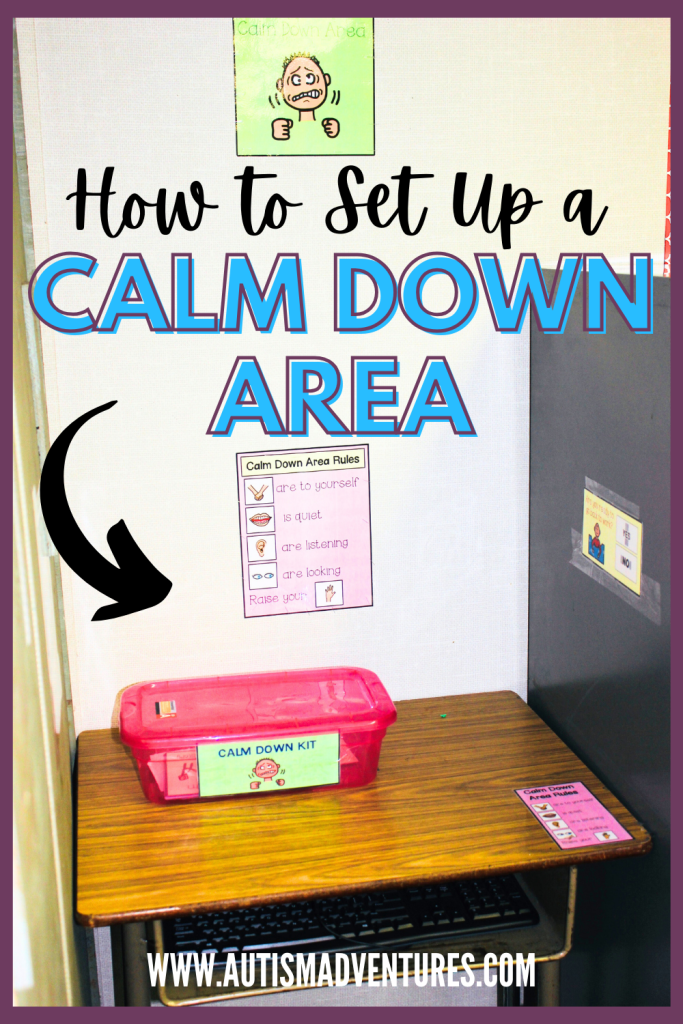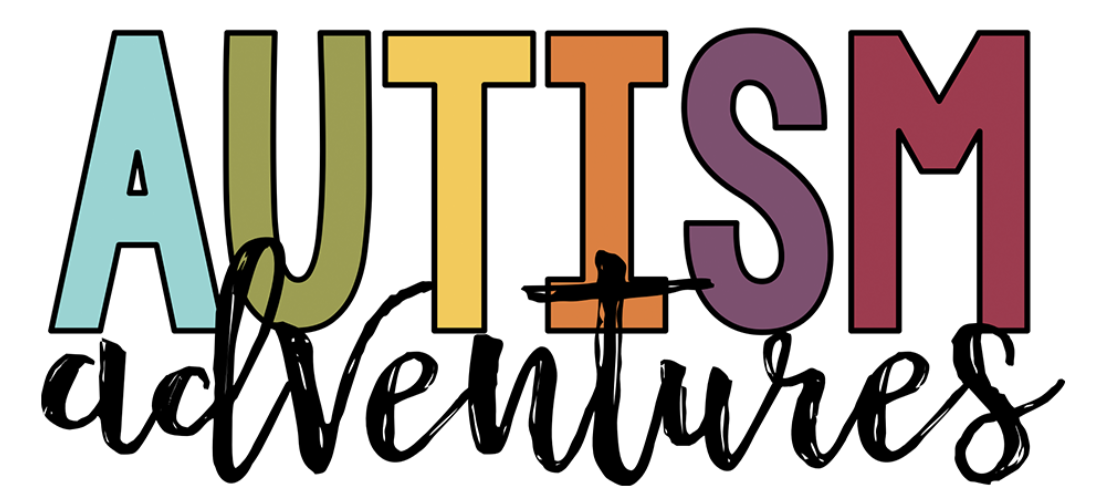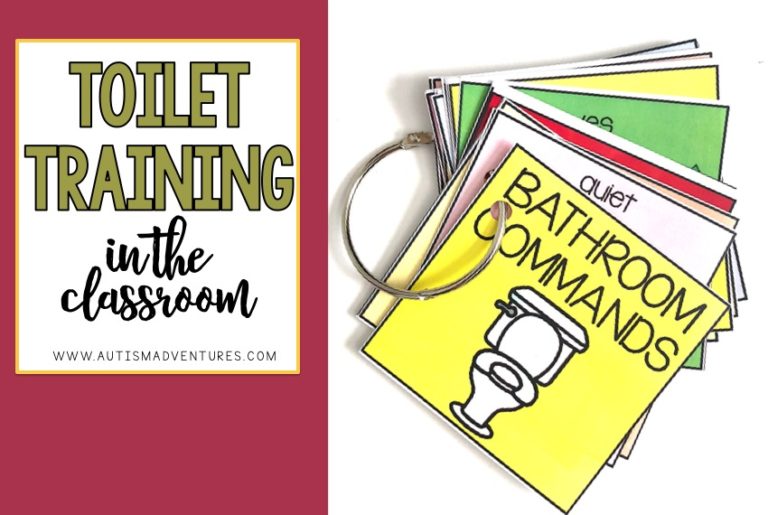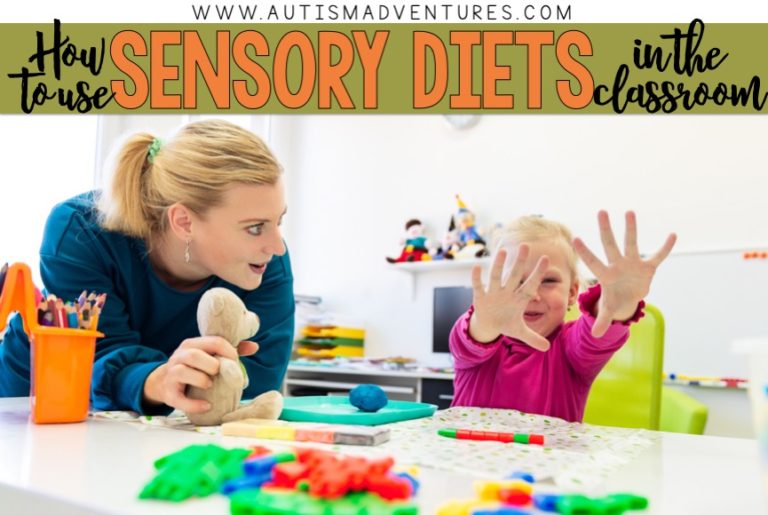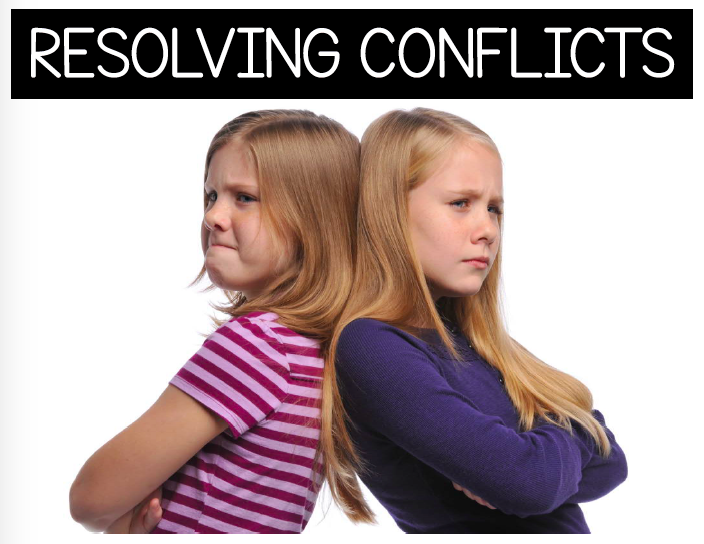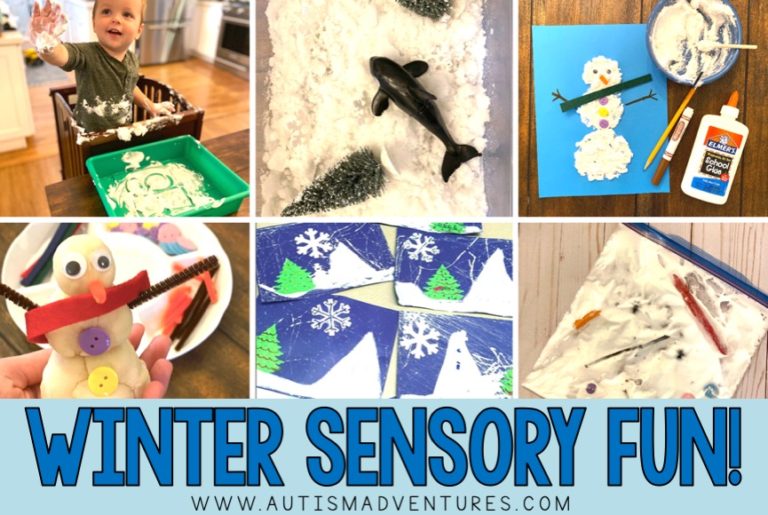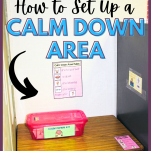How To Set Up the Best Calm Down Kit/area for Your Classroom
Today’s post is all about supporting the emotions of your students in the school setting. A big job of special education teachers is teaching students to identify their emotions, regulate their emotions and be successful and independent within the school day. Today I am going to discuss how you can support your students within the school setting. I will discuss how to set up a calm down kit and calm down area in your classroom.
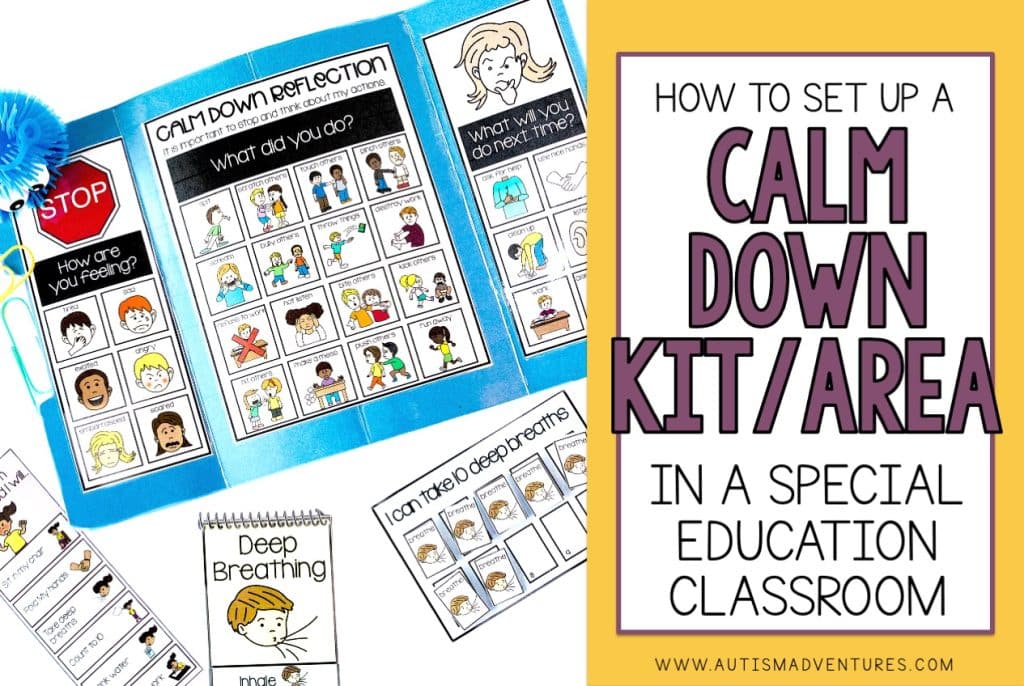
Why is a Calm Down Kit a Valuable Tool?
Calm down kits in the classroom are an invaluable resource for supporting emotional regulation and creating a supportive learning environment. Calm Down kits typically include various tools and activities created to help students manage their strong emotions and stress levels. From sensory objects like stress balls and fidget spinners to mindfulness exercises such as deep breathing techniques and guided meditation scripts, the contents of these kits are designed to meet the needs of your students. Implementing calm down kits not only prepares students with coping strategies but also empowers them to take ownership of their emotional well-being. By providing a safe space for students to navigate their feelings, special education teachers can create a positive classroom atmosphere conducive to learning and growth.
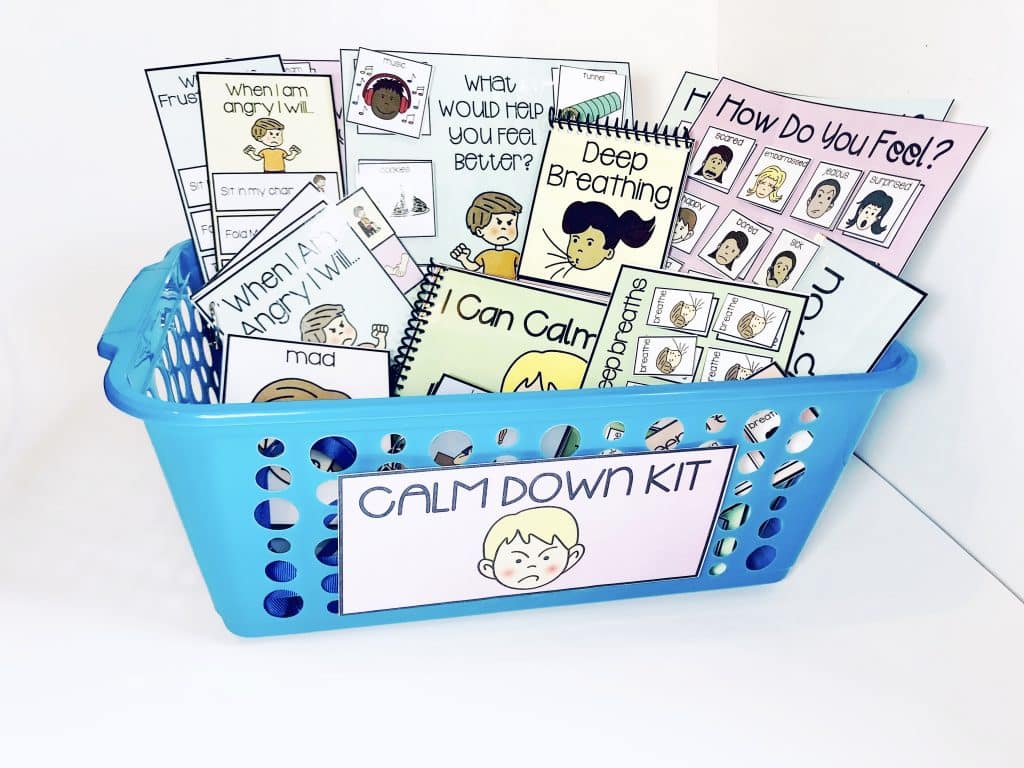
Why is a Calm Down Area Important?
A calm down corner in a special education classroom is a designated area designed to provide students with a safe and supportive space. In this space they are able to regulate their emotions and regain a sense of calmness. It usually has various sensory tools to meet the sensory needs of your students. Additionally, the calm down corner usually will have visual tools to help students identify and express their feelings. Teachers often teach students coping strategies and self-regulation techniques to utilize in the quiet area, fostering independence and emotional resilience. A Calm Down area can also be paired with a calm down kit. A calm down area can be designed any way to meet the child’s needs within your classroom.

Selecting Tools and Resources for Your Calm Down Kit
Now that we know why calm down kits and calm down areas are important for the school setting, let’s discuss what to include inside. First and foremost, I want to clarify, that like everything in education, these will need to be tailored to meet the needs of the students you currently have. Some visuals and tools you used last year may not be effective this year, and that is just FINE! Simply store anything you don’t currently need for your caseload and pull it out when that need arises again. That’s the beauty of laminated materials, you can always reuse them down the road! I will share some calm down kit ideas below.
Sensory Items for Calming Down
* This post may contain affiliate links. This means that if you click and end up purchasing, you pay no extra cost, but I earn a small fee for referring you.
There are a huge variety of sensory items that you can include in your calm-down kit and calm down area. Shop some of my favorites HERE in my amazon store. Adding tools to your calm down kit is a great way to help students manage emotions with a hands on approach. I am going to share some of my favorites including links for you to easily grab them for your class. However, keep in mind, you can add ANYTHING that will help meet the needs of your students.
Some of my favorite small toys to include in your calm down are are silly putty, bottle of bubbles, water beads, and fidget toys.
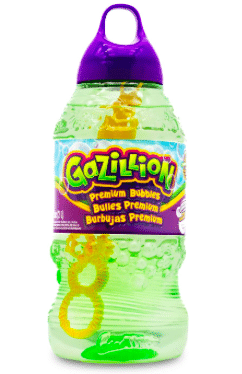
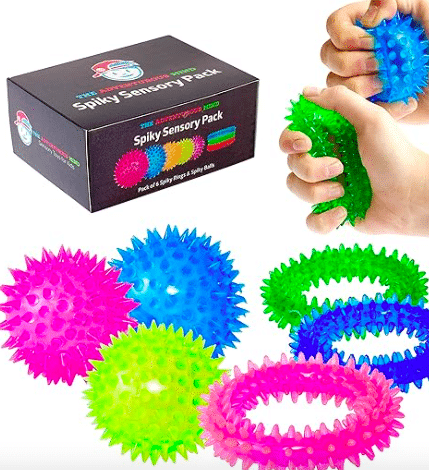

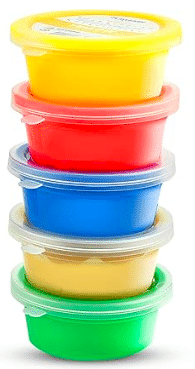
Some of my favorite sensory goodies to include in a calm down area are a sensory bottle, squishy balls, play doh, silly putty, bubbles, calm down jar, chew necklaces, noise-canceling headphones,

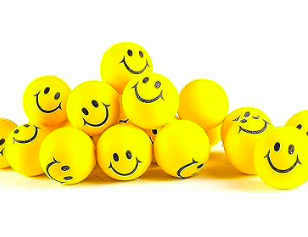
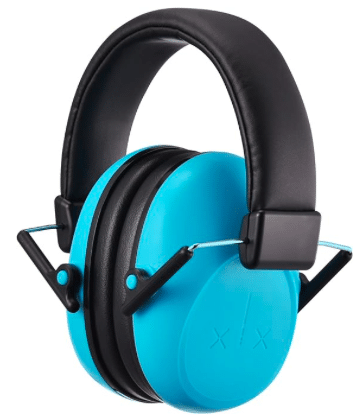
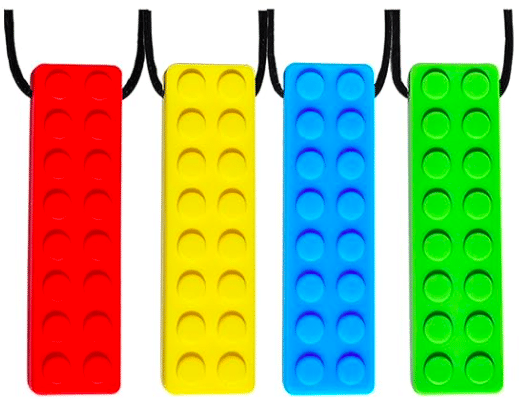
For the kids that get a little squirmy consider adding a fidget spinner, fidget cubes or wiggle chair.

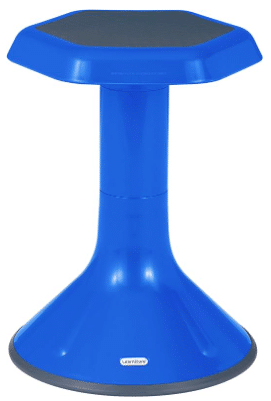
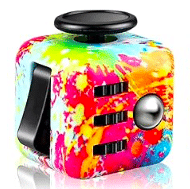

In order for your calm down area to feel like a safe place, be sure to add a bean bag chair and your students favorite soft toys. You can also consider adding a mirror, essential oils or a music player. This can help your students feel safe in their calming corner when having big feelings.
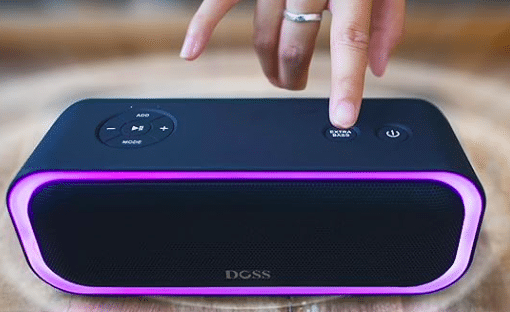
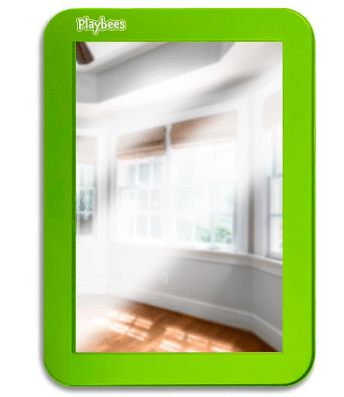

Visuals for Calming Down
While tools are important for helping students cope with their emotions, so are visuals. Over the years I have created a ton of different visuals. Some of these help my students identify and cope with their big emotions. Some of these tools have been used year after year awhile others have been used with only some of my students. Always monitor what is working for your caseload, and what is not. Simply store items you don’t need so that your calm down area is not too cluttered.
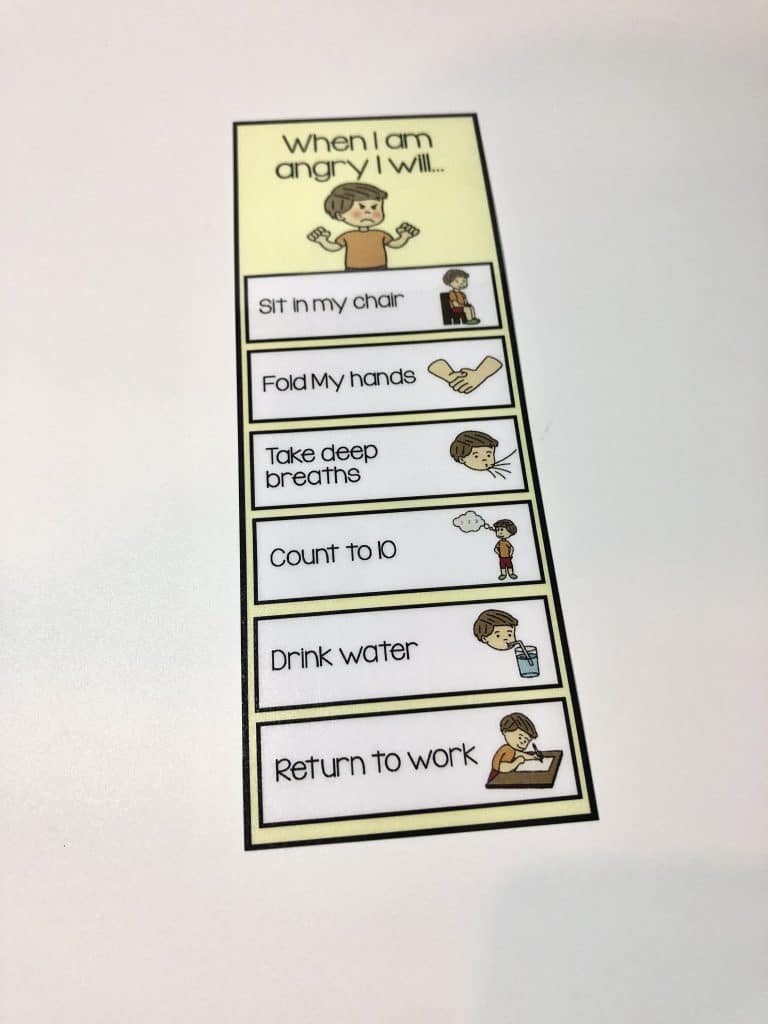
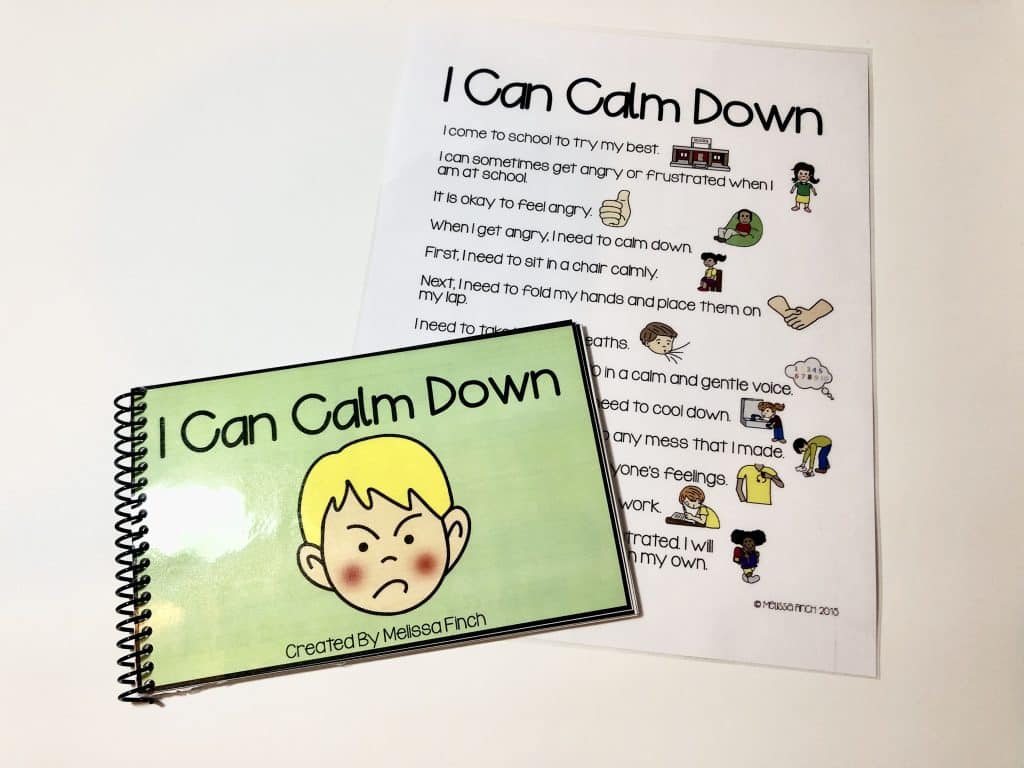
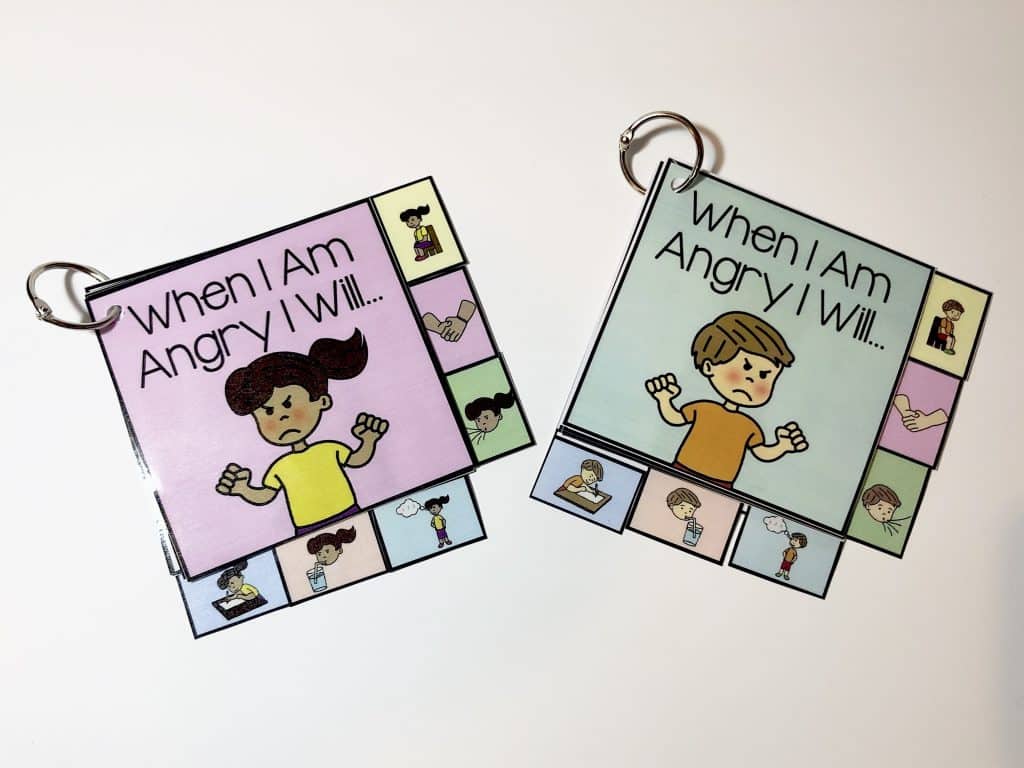
Emotion Visuals
Here are some emotions charts I like to include in my calm down kits and calm down area. These visuals help students to identify their emotions, cope with big emotions and calm themselves to return back to the task they were working on. Posting a feelings chart in your calm down area is a great addition to any special needs classroom.
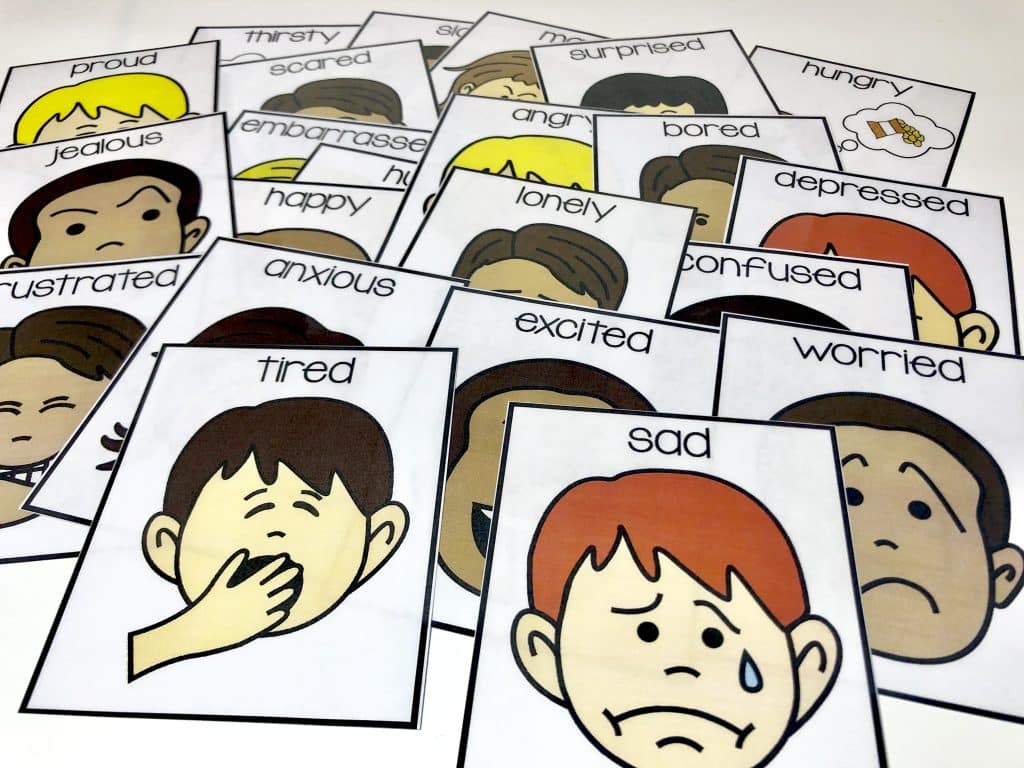
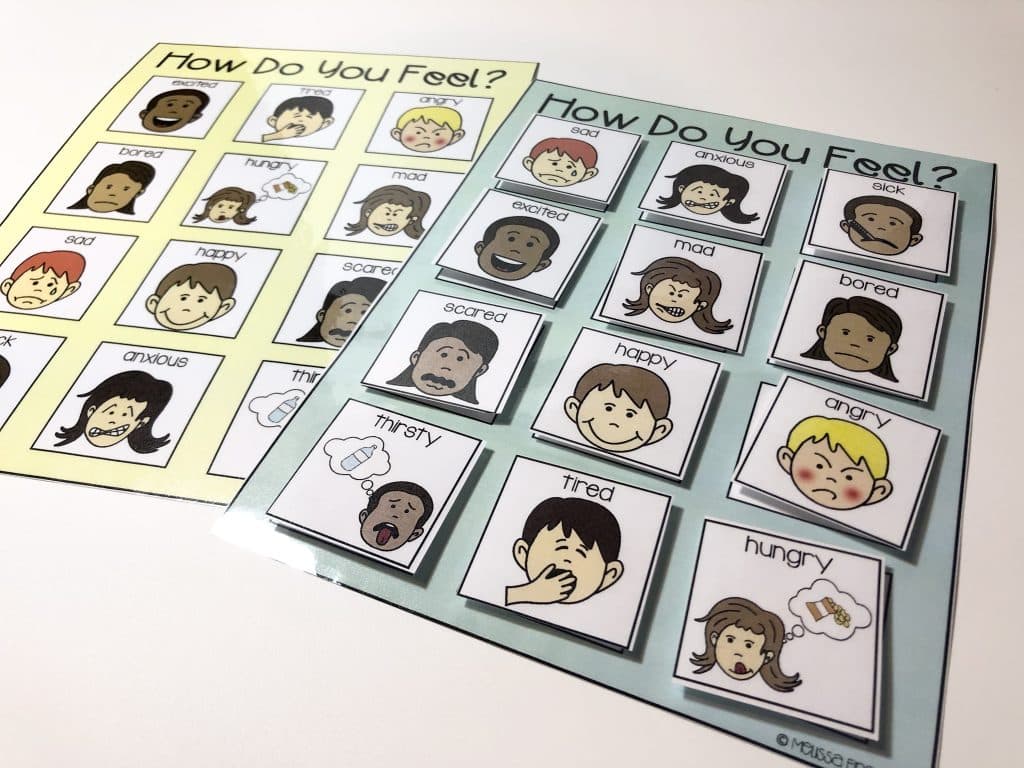
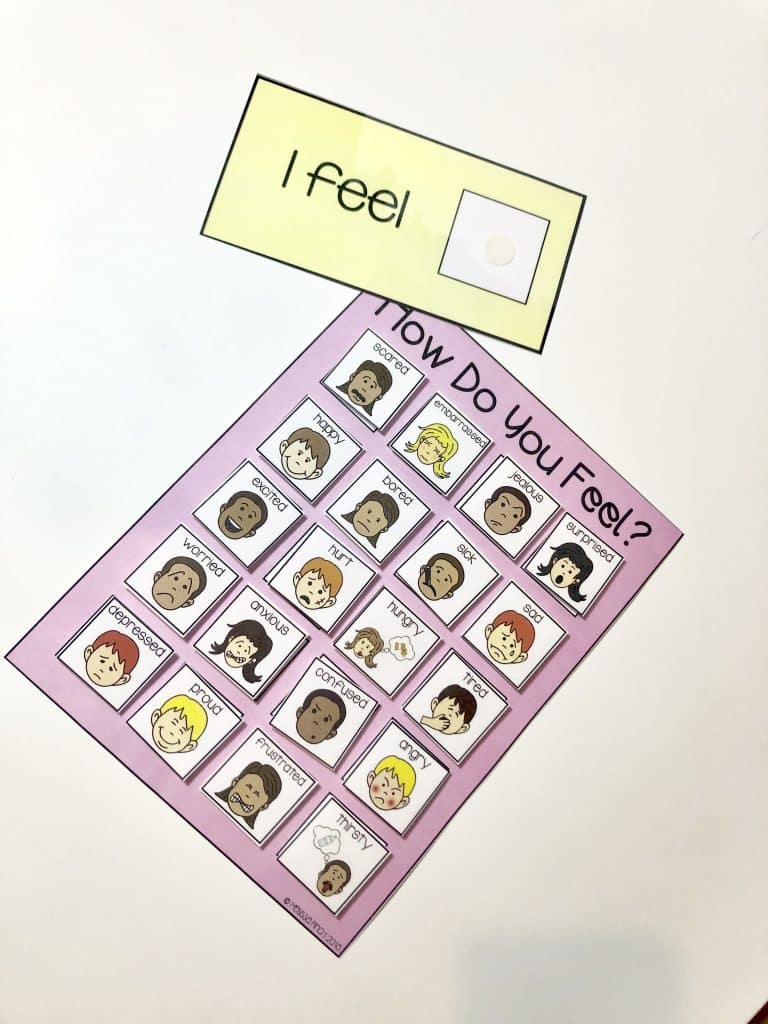
Breathing Visuals for a calm down kit
Here are some deep breathing exercise visuals I like to include in my calm down kits and calm down area. Teach students how to take deep breaths to regain a calm body.
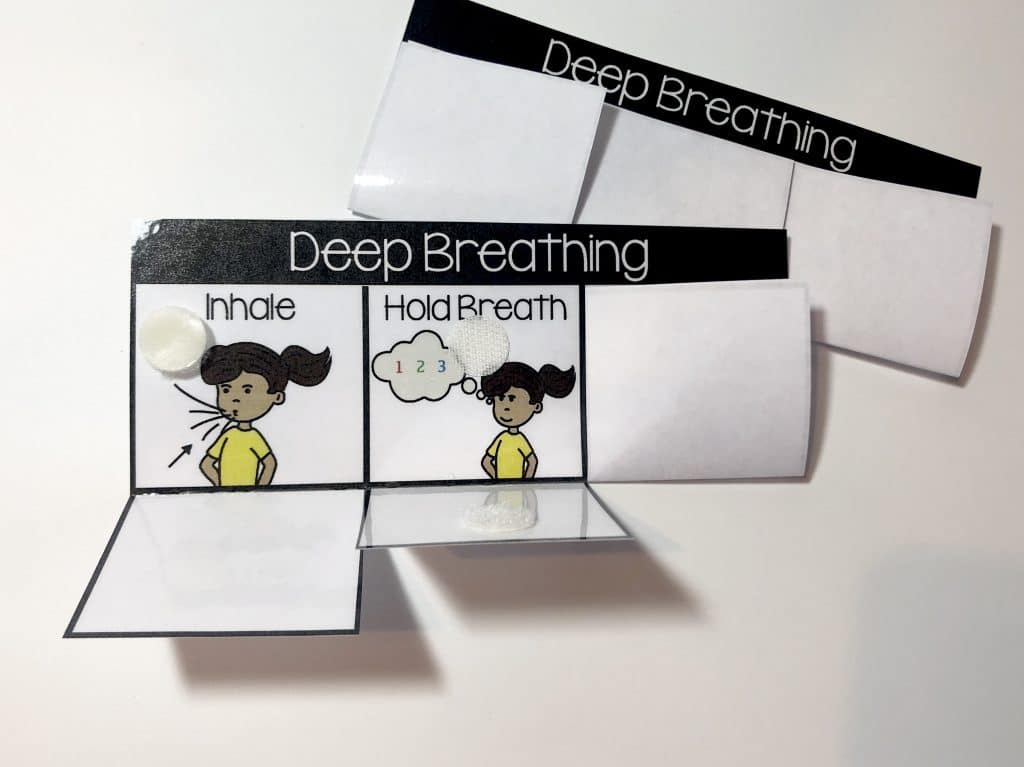
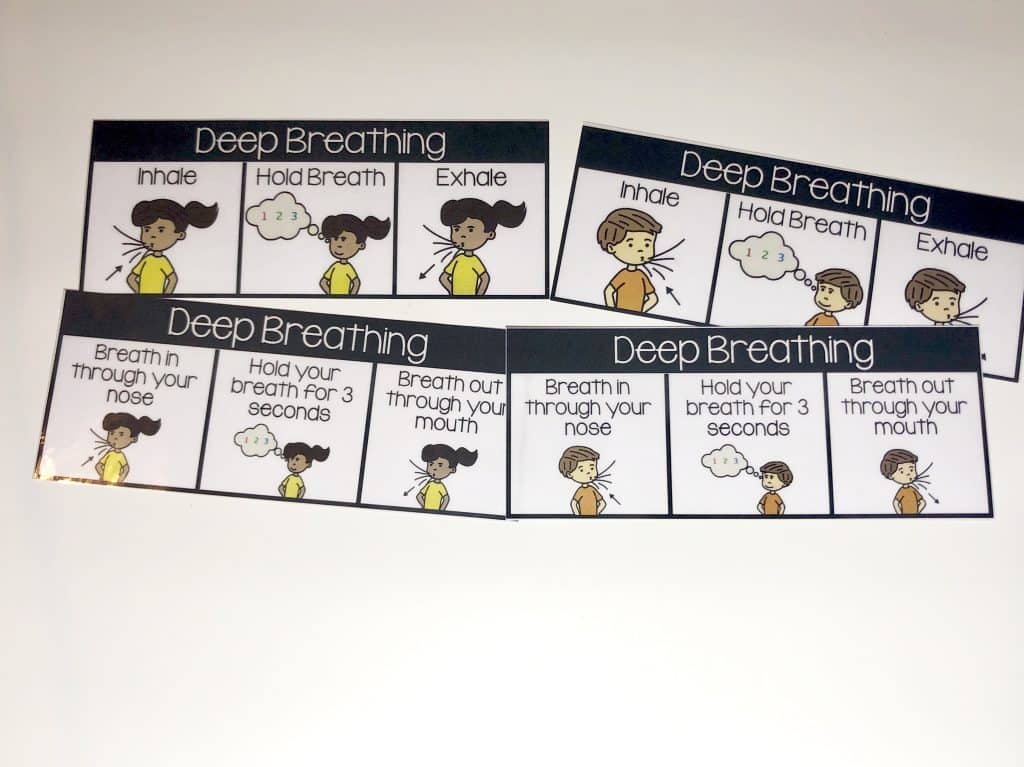
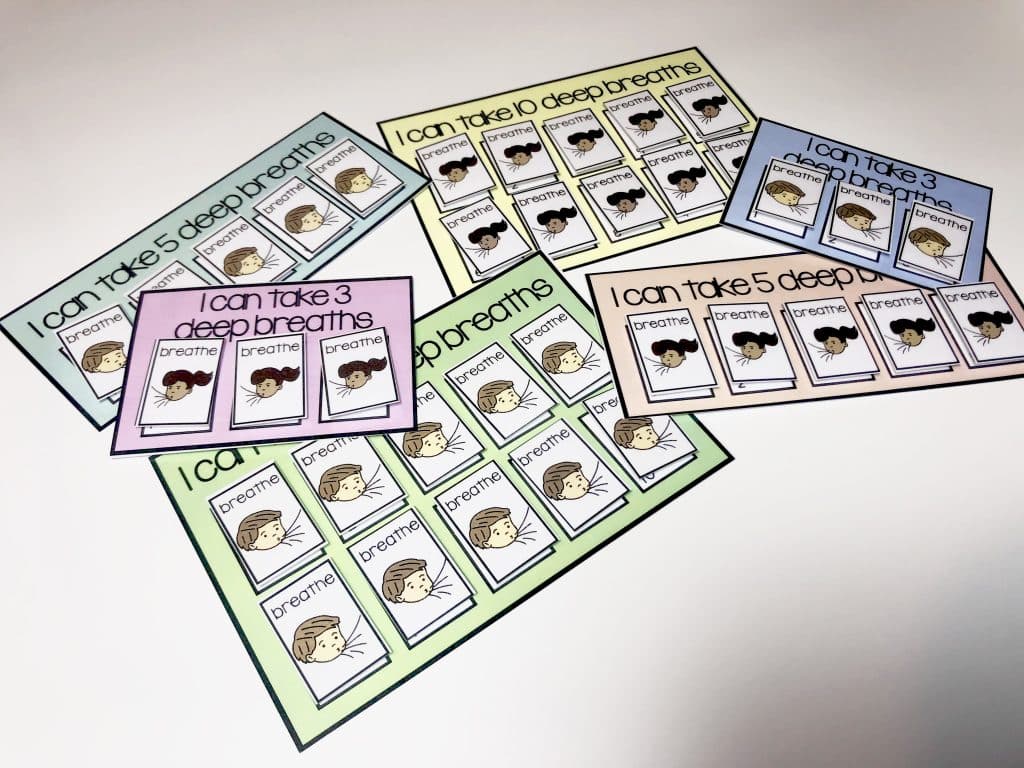
Break Visuals
Breaks are important. Here are some break visuals I like to include in my calm down area to help students ask for a break. These visuals help students to request a break time, access break time and return from a break.
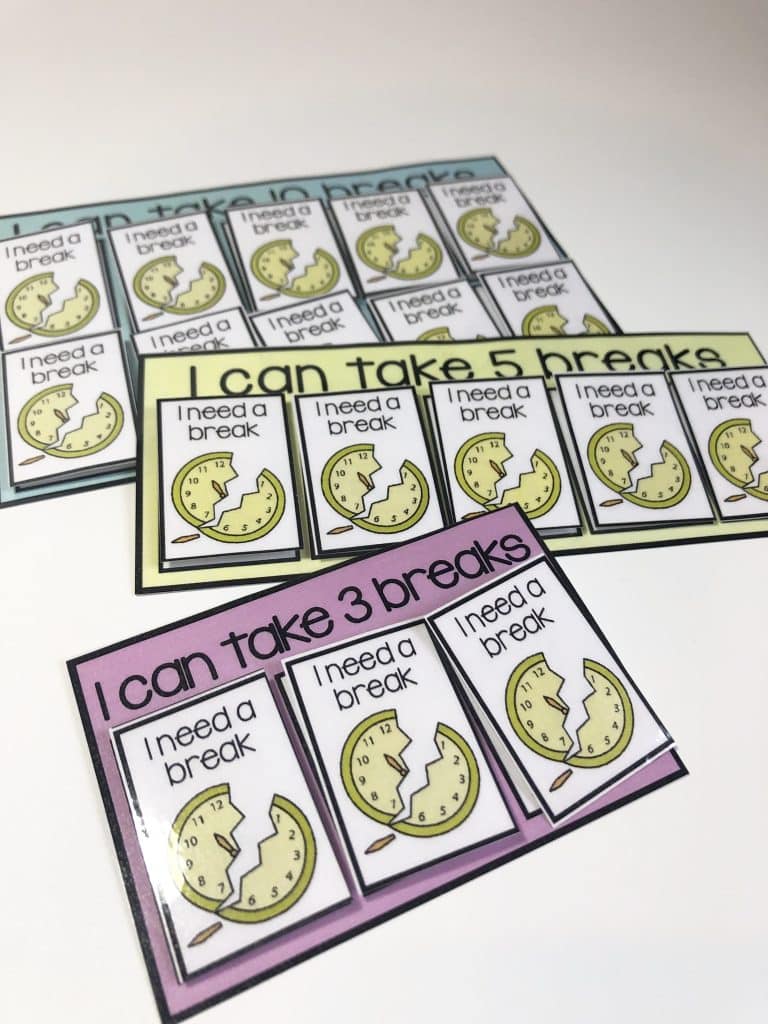
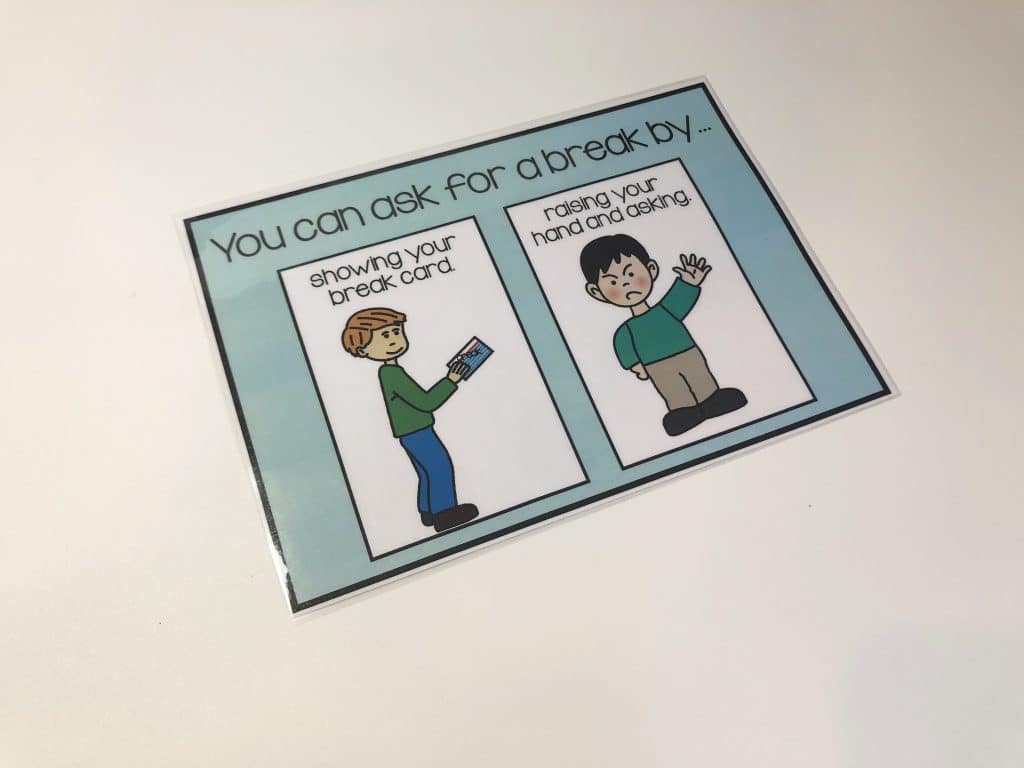
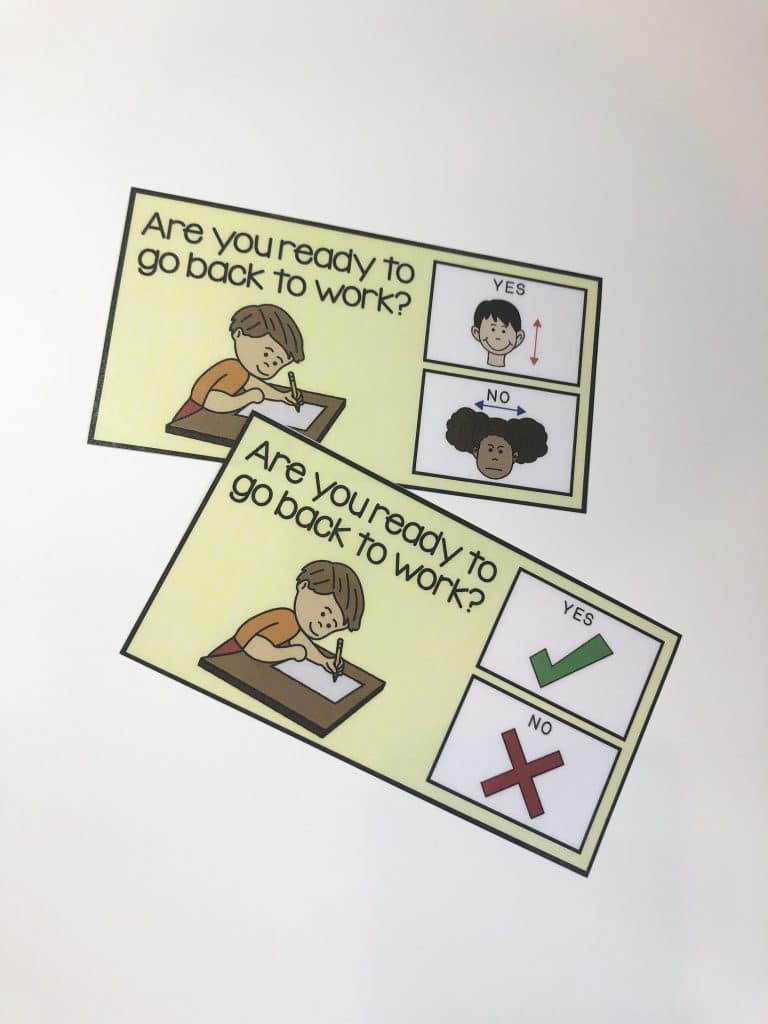
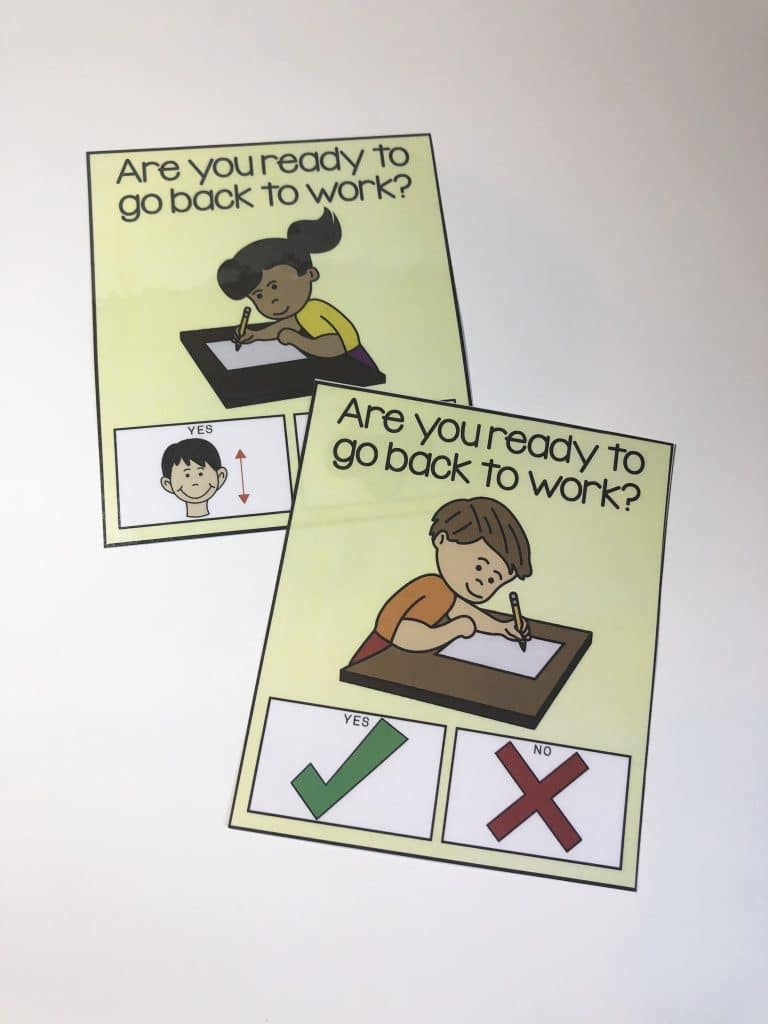
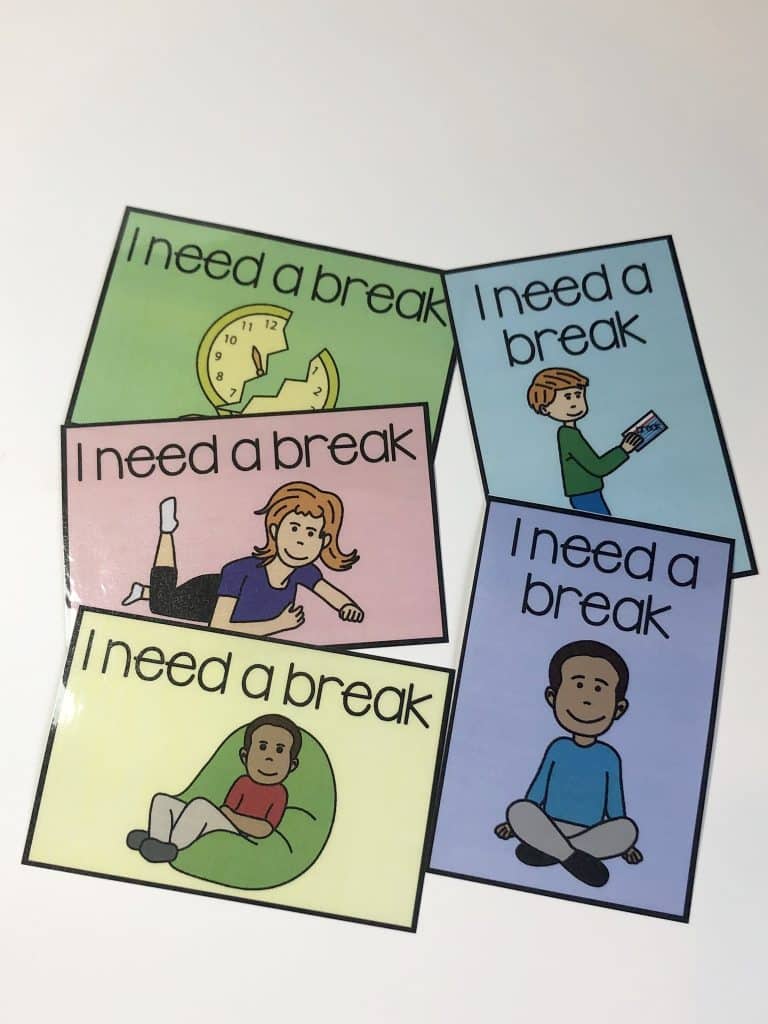
Sensory Visuals for a calm down kit
Here are some sensory visuals to help children calm down when stye are on sensory overload. These visuals can be paired with sensory goodies. Sstudents can request sensory breaks to help them regulate their emotions.
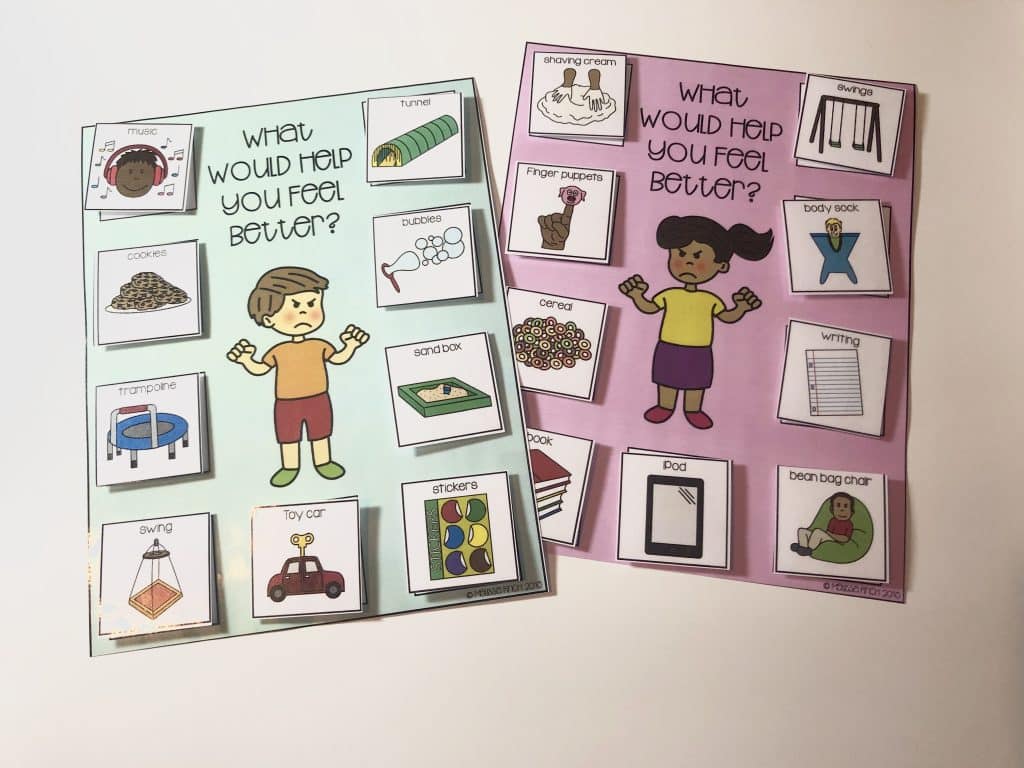
Coping with emotions is important and should always be the priority when visiting the calm down area. However, it is also important to reflect on any big emotions the child may have had. Here is a behavior reflection interactive chart I created to help students learn better choices for the future.
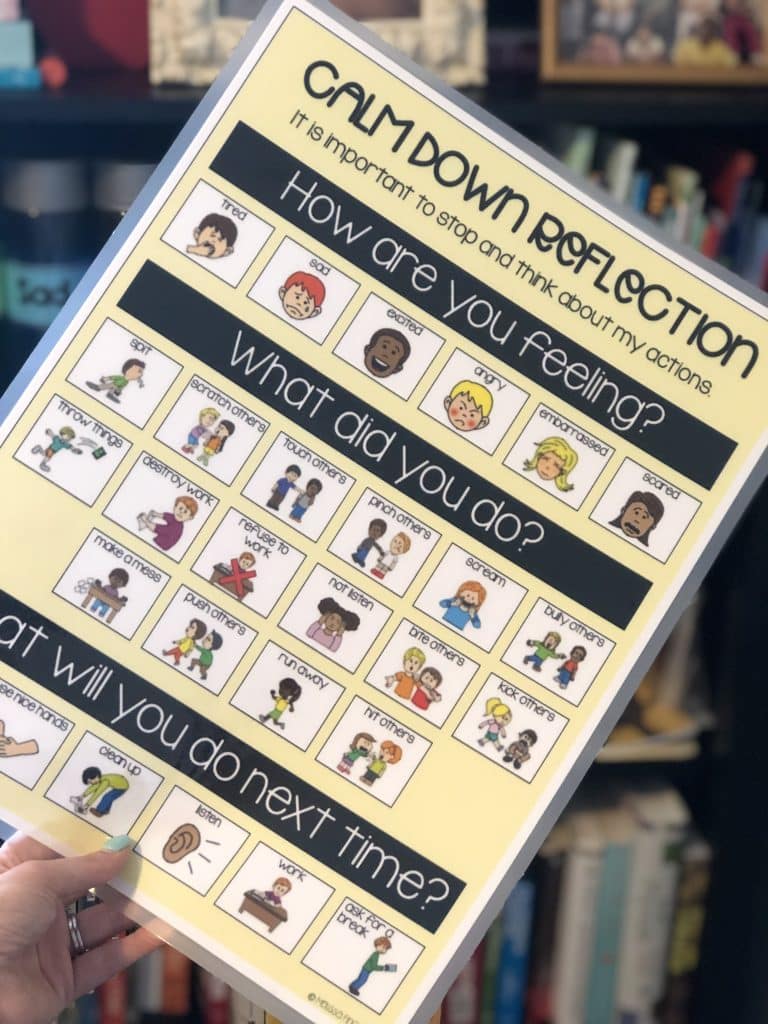
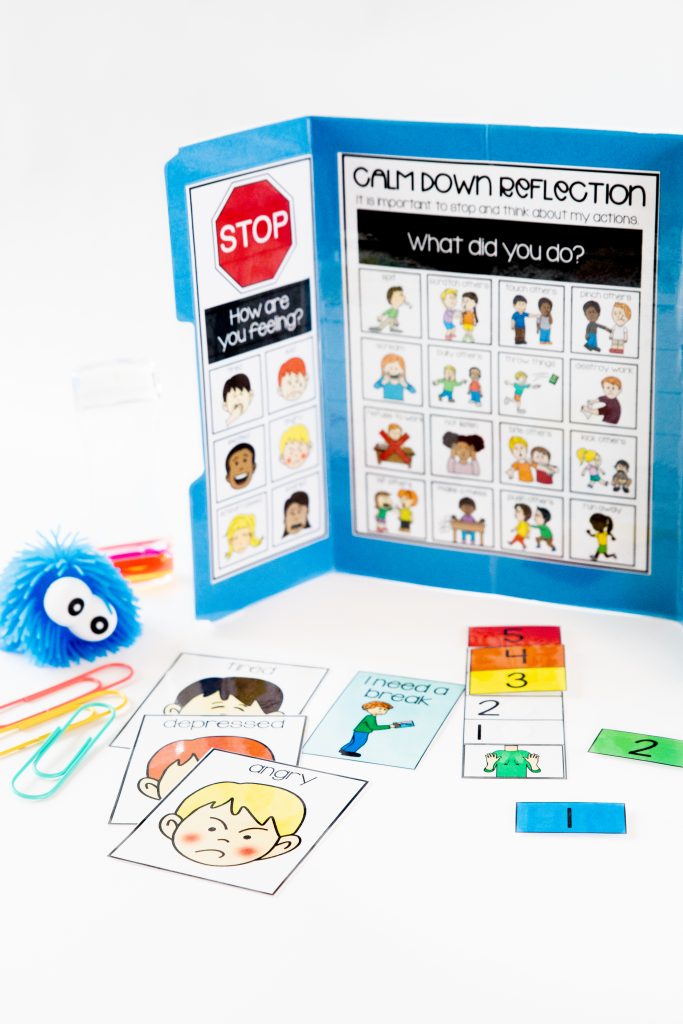
Calm down Kit on the Go
Visuals are needed in all situations of the day. Not every situation and not every day, but for some students, they need to be ready at all times. The Calm Down Kit on the go was designed for JUST THAT. Imagine a spiral bound book, with easy to flip tabs to navigate all the visuals you need while out on the go. This is perfect for recess, specials, services and community outings. It is also great for families that want a plethora of visuals at home but don’t have the means for individual ones.
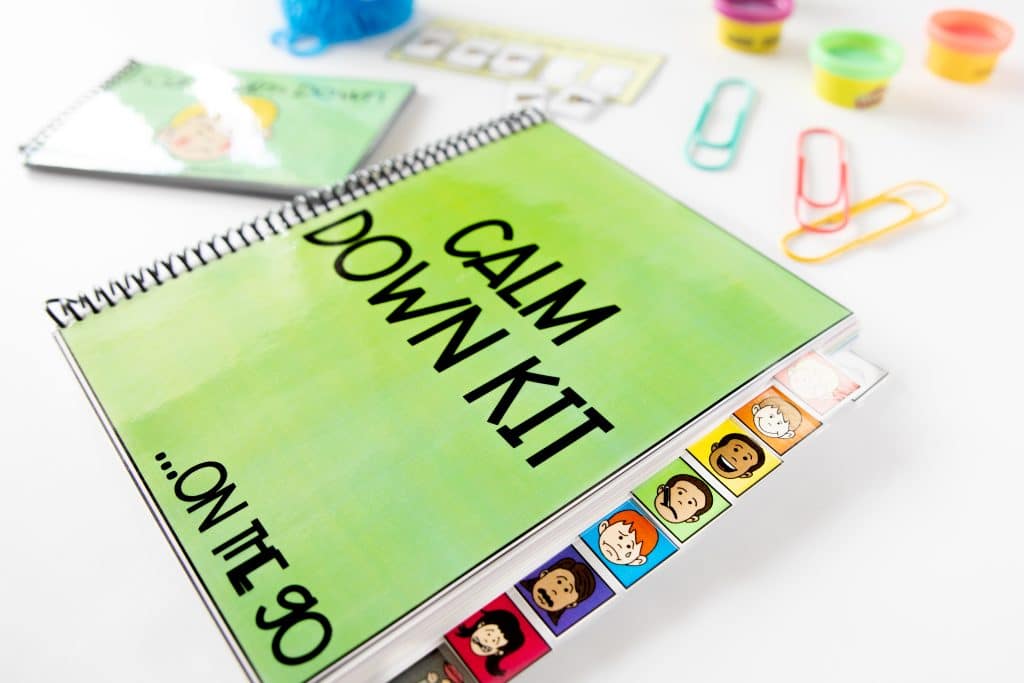
Below are some pictures of my Calm Down Kit on the go so you can get a peak of what is inside!
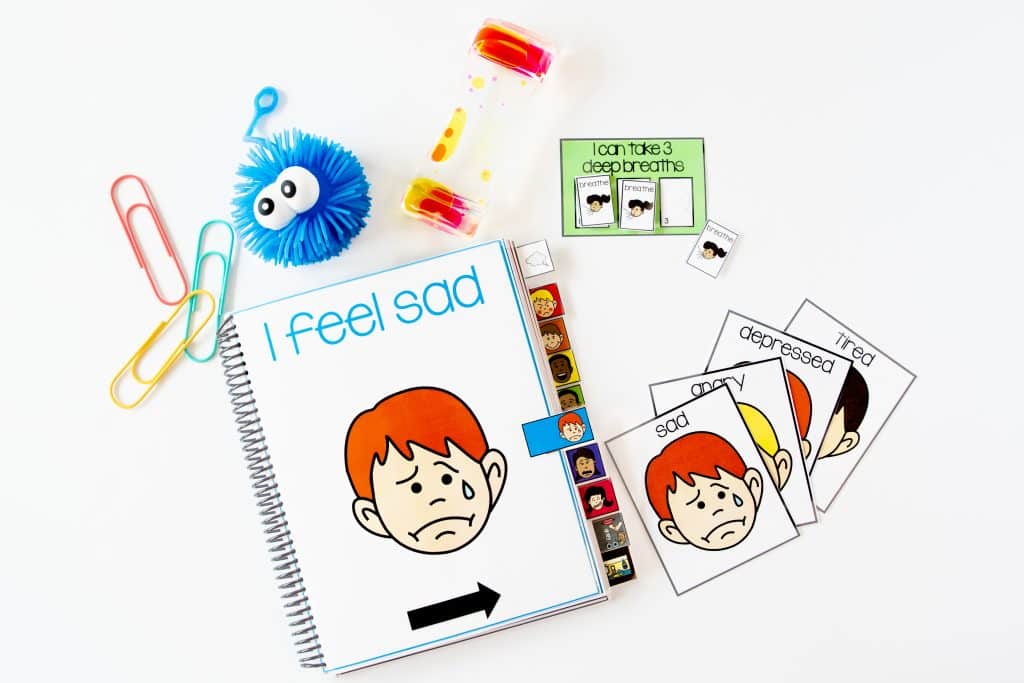
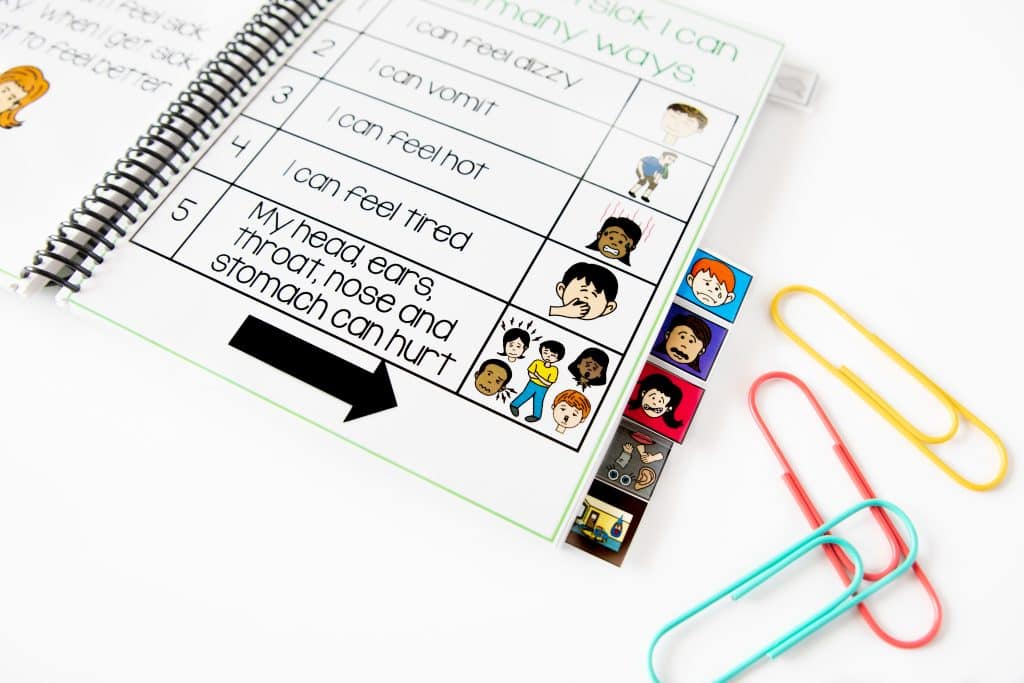
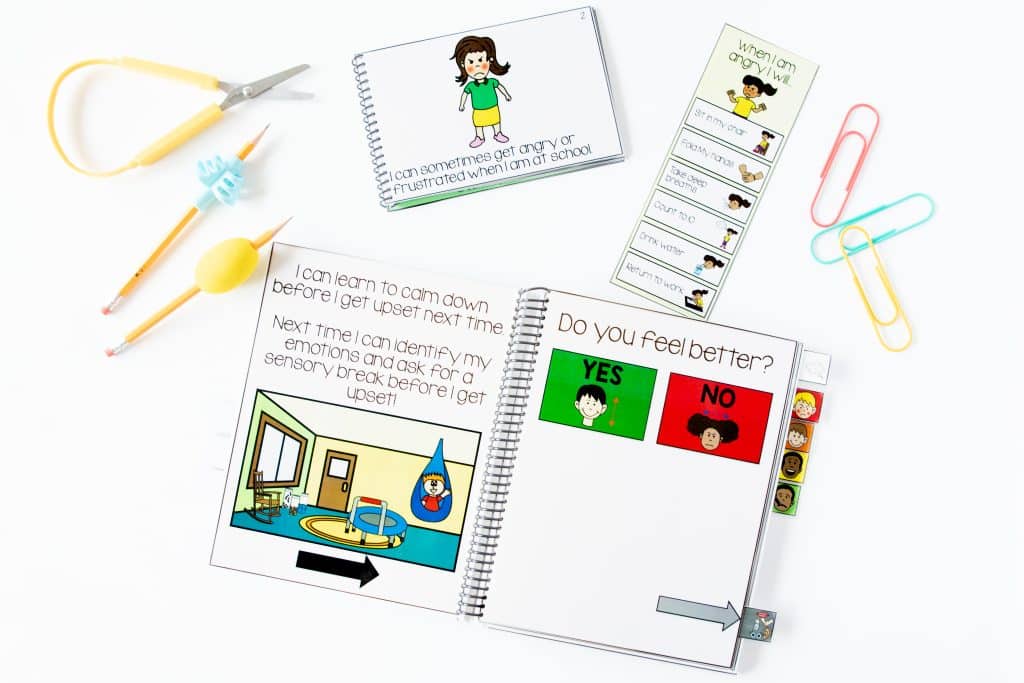
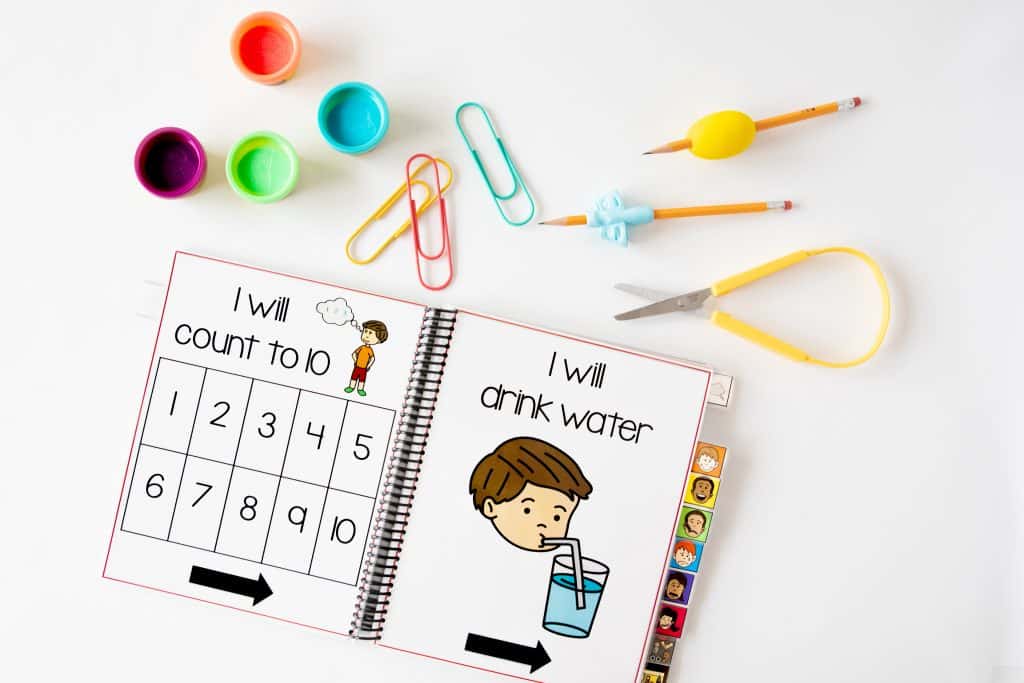
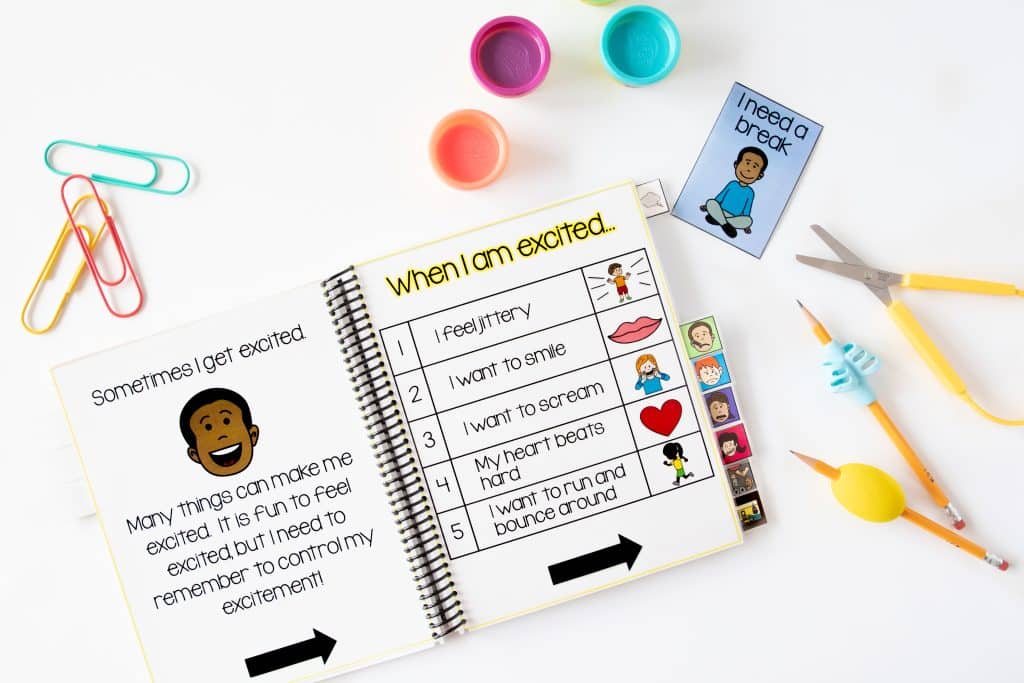
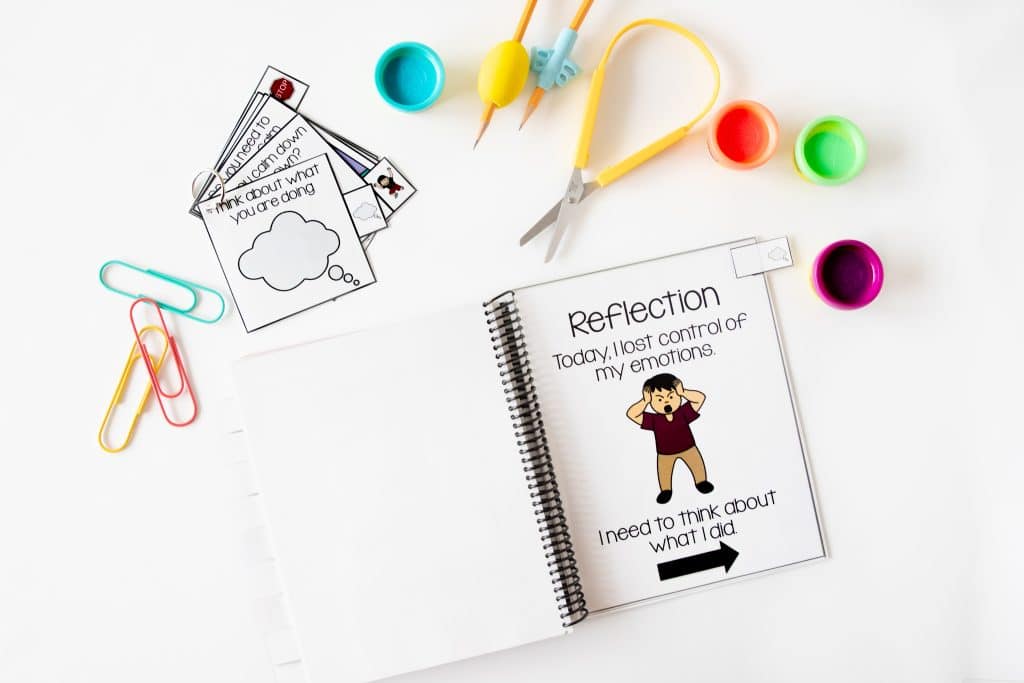
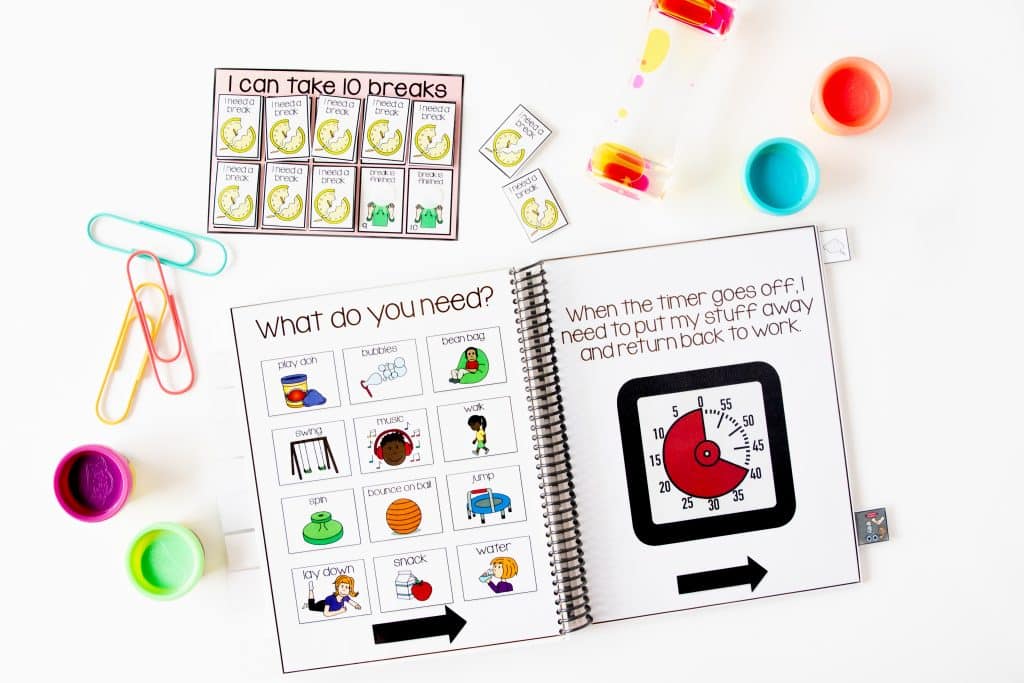
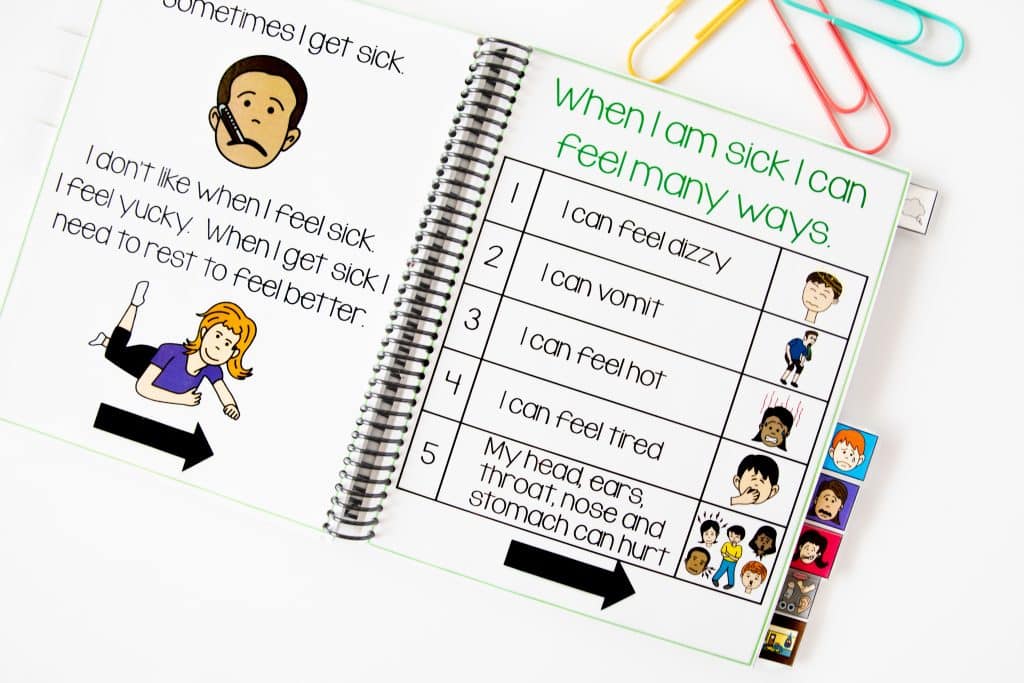
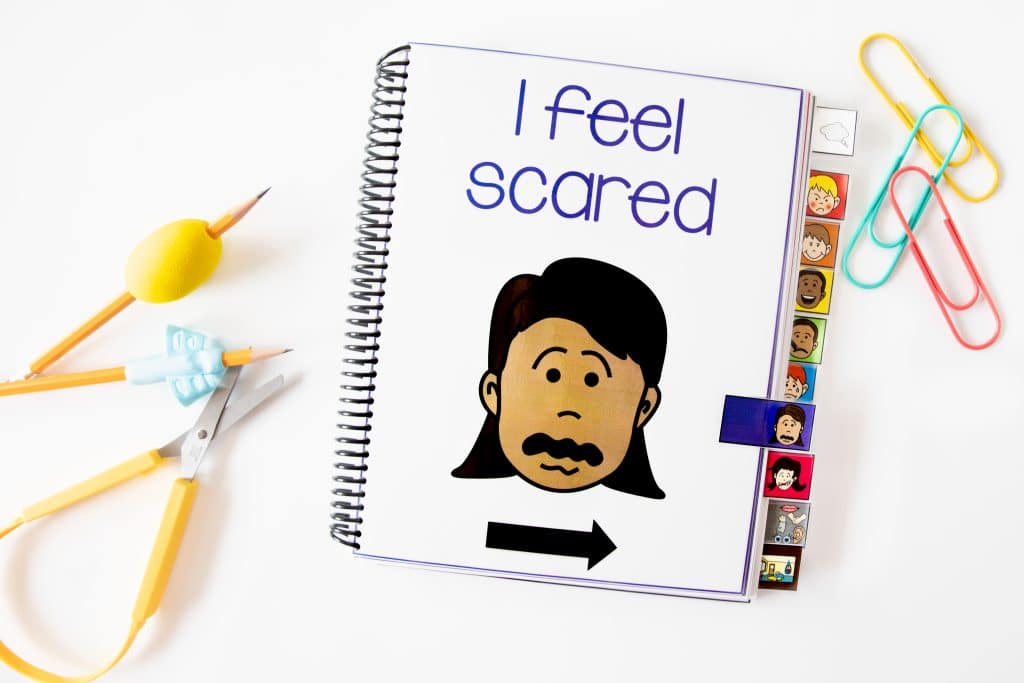
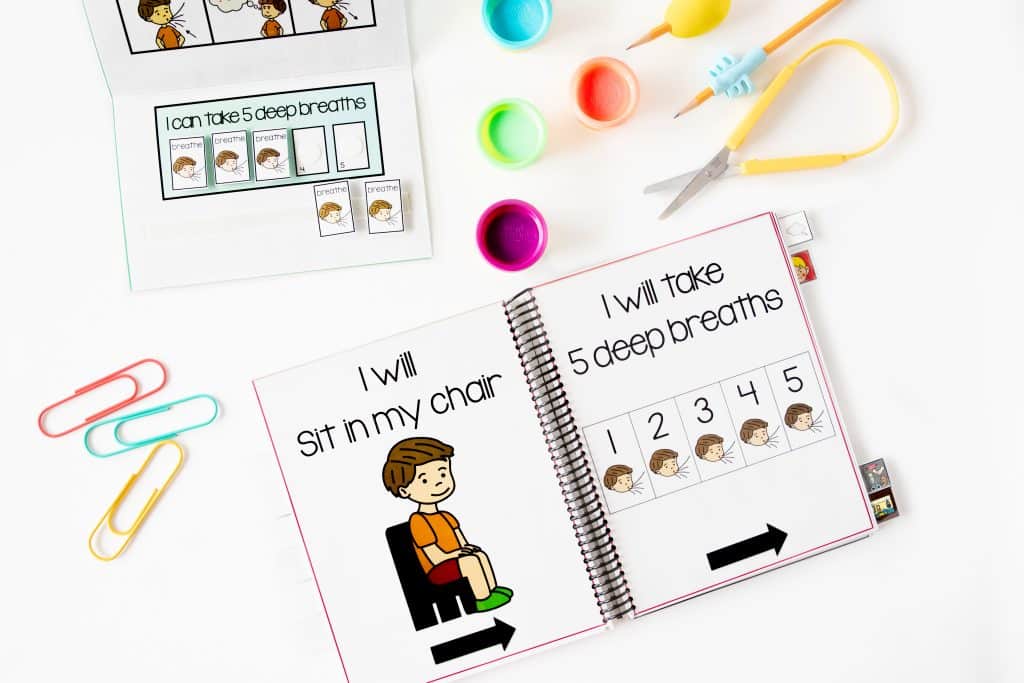
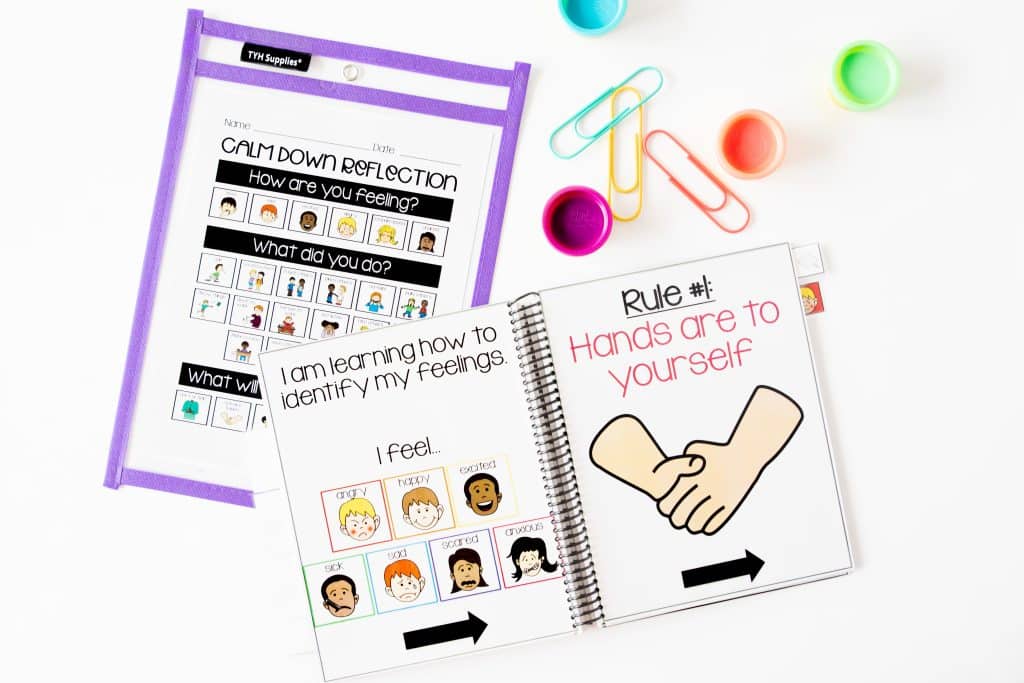
Teaching students how to access the calm down area
While it is important to create visuals and provide tools for your calm down kit, you can’t assume students will know what todo with it. It’s not a one and done when creating a calm down kit. Each visual tool and each sensory toy needs to be modeled to the students. It is important to model to students how to access the tools provided within the calm down kit, what is allowed to be accessed and when they can access it. Set clear guideline from the beginning so that students are successful.
When students demonstrate big emotions, prompt them to the calm down area. With staff assistance help the child access the tools they need to calm down. Over time, fade prompts so that students will be able to independently cope with their emotions.
How does a Calm Down Kit Create a Safe Environment
A calm down kit or calm down area can easily create a safe environment within the classroom. It does so by offering students a dedicated space where they feel supported and understood. By offering a wide range of visuals and resources tailored to individual needs, the calm down kit allows students to regulate their emotions effectively and build resilience in the face of challenges. When students feel that they are in control of their own emotions, they will feel safe and secure. It will also encourage students to express their emotions to staff and peers in a safe manner. Having a calm down kit in the classroom allows students to feel safe, feel that their emotions matter and it creates a classroom climate that priorities the emotional well being of the students.
Like what you read? Don’t forget it, PIN IT!
